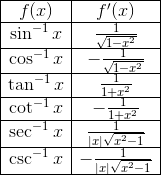As a former Language Arts teacher and current freelance writer, I have an affinity for words of all shapes and sizes. In my experience I’ve discovered that the smallest words have the biggest impact on people’s daily lives. For example, let’s look at the words ‘of’ and ‘by’. Just about everyone uses these two prepositions at least once a day. I walked by the school. I ate two of the three cupcakes.
Yet when it comes to countries and their governments, these two little words make all the difference. There are countries (like the U.S. & U.K.) that follow the rule of law. And there are other countries (like China) that rule by law. Changing one word changes an entire country’s political system.

If you are captivated by democracy, dictatorship, and everything in between, there is no better course than AP Comparative Government and Politics. In this course you will study a handful of modern countries to uncover how their various governments work. Like any AP course, the end of the year means the AP Exam. In this article I’ll take you through everything you need to know for exam day. If you get to the end and still have questions, make sure to check out the College Board’s official website for AP Comparative Government and Politics.
Note: This article accounts for the latest revisions to the AP Comparative Government and Politics Exam (Fall 2014). Students studying for the AP Comparative Government and Politics Exam should only reference study materials published after this date.
How You’re Assessed on the Exam
AP Comparative Government and Politics is a smorgasbord of information. There’s a little history. There are some rules and concepts. Current events play a big part of the course, too. Throughout the year your teacher will cover six broad topics from the following Curriculum Outline. Below are the topics, some of the content contained within each, and the percentage weight each one has on the AP Exam. The following is in no way a study guide, but an introduction to what you will encounter leading up to exam day.
- Introduction to Comparative Politics (5%)
- Basic concepts
- Purpose of government
- Ways to organize government
- Sovereignty, Authority, and Power (20%)
- Nations and states
- Supranational governance
- Constitutions
- Economic systems
- Political Institutions (35%)
- Levels of governments
- Leaders of government
- Legislatures/Parliaments
- Elections
- Political parties
- Bureaucracies
- Citizens, Society, and the States (15%)
- The role of media
- Social movements
- Civil society
- Political and Economic Change (15%)
- Revolution and war
- Trends of political and economic change
- Public Policy
- Social welfare
- Migration
- How policy making decisions are made
Successful Time Management
In this section I will break down the length of the AP Comparative Government and Politics Exam, and offer suggestions on how to make sure you successfully finish each section. First a piece of recycled advice from my ACT articles: take multiple timed practice exams to become familiar with the exam’s format, content, and pacing. For students will a College Board Account, a full-length practice exam is available for you to take right now.
Section I: Multiple Choice (55 Questions, 45 Minutes, 50% of Exam Score)
Okay, so you have 52-ish seconds to answer each multiple choice question. To finish on time, you need to complete five questions every four minutes.
Each multiple-choice question is ‘stand alone.’ There are no groups of questions that ask about a common image or primary source document. However, some of the questions in Section I will ask you to analyze a graph or chart.
If you’re taking AP Comparative Government and Politics, I bet you’ve already taken your fair share of high-stakes standardized tests. Even so, check out my article on ACT Time Management. The article goes over some simple tips and tricks that you can’t afford to miss on exam day.
Another thing to remember is that like all AP Exams, on AP Comparative Government and Politics there is no penalty for guessing. That’s right; no points are deducted for incorrect answers. Why is that good for you? Well, if there is a question or two where you get stuck, there is no shame in guessing and moving on. Just don’t leave any questions blank!
Break (10 Minutes)
Break is an important time during any AP Exam. Yet even for a two-hour exam like the AP Comparative Government and Politics, you’re only at the halfway mark. Go to the bathroom, drink a little water, and don’t forget to eat something. There’s a lot of writing coming up, and you’re going to need some fuel to finish strong.
Section II: Free Response (8 Questions, 100 Minutes, 50% of Exam Score)
Okay, so you have an hour and forty minutes to answer eight questions. But not all of these questions are created equal. Here is the breakdown for Section II:
- Five Short-Answer Questions (30 minutes)
- These questions will ask you to identify, provide examples of, or contrast different concepts and terms.
- One Conceptual Analysis Question (30 minutes)
- This question will ask you to apply learned concepts to identify and explain the relationship and implications of politics and policy.
- Two Country Context Question (40 minutes)
- These questions will ask you to apply concepts to analyze one of the countries studied throughout the course.
- FYI: These countries you will study are Nigeria, Iran, China, Russia, United Kingdom, and Mexico.
As you practice Section II, make sure to account for the time you will need to read questions, analyze material, and outline longer answers.
Section II Pro-Tip: If you’ve taken multiple timed practice tests, and are comfortable with time management, try to squeeze in the last 2-3 minutes to review what you wrote. AP exams are stressful experiences, and all the pressure might make you leave out something important, even if you know the material. Having time to review means the opportunity to catch and fix mistakes.
Test Content: Section I (Multiple Choice)
Because the exam hasn’t changed in over two years, many multiple choice questions from previous years’ AP Comparative Government and Politics Exams are still a valid way to prepare for test day. If your teacher knows what he or she is doing, you will see old (but still relevant) exam questions on just about every one of your tests throughout the year.
To improve your score on the multiple-choice section, let me recycle some advice: focus on your weaknesses. After your first practice test, go through your missed questions and make a list of topics where you struggled. After some studying (how you study I’ll leave up to you), take another practice test. Rinse and repeat.
One last thing about time management: If you’re comfortable with time management on other standardized tests, you should have little to no trouble with the AP Comparative Government and Politics Exam’s multiple-choice section. Even so, remember my previous advice: if necessary, guess and move on.
Test Content: Section II (Free Response)
When starting any of the three parts found in Section II, here’s what I’d recommend you do:
- For each part (Short Answer/Conceptual Analysis/Country Context), count the number of tasks you have to complete in the suggested time limit (Tasks are represented as Part A, B, C, etc.). That way you know how much time you can dedicate to each task.
- Start with the tasks you know right away. Write the answers on your answer sheet before tackling the more difficult tasks.
- For tasks that ask you to complete two options from a list of three, circle your chosen options in your test booklet.
- Pay attention to the first word of each task. For tasks that begin with ‘identify’ or ‘describe,’ it is alright to write shorter answers as long as you fully answer the question. For tasks that begin with ‘explain,’ the readers expect you to go more in-depth with your replies.
- Pay attention to questions that have multiple tasks. Before moving on, check off that you have completed each task the question asks you to do.
The End
AP Comparative Government and Politics is a course taken by mainly high school seniors. After the exam is over, you will get caught up in graduation and the transition to college. Yet as May turns to June, high school and college teachers across the country sit down to grade your Free Response replies. In short…
The College Board will release AP Comparative Government and Politics scores in early July.
Yep, one day in the middle of summer you’ll get an email saying that your scores are ready on your College Board account. For those of you who earn a 4 or 5, congratulations. You definitely just earned a semester’s worth of college credit.
Some colleges, though, don’t accept 4s for various reasons. As you’re making your final decision about which colleges to apply to, make sure to research potential colleges’ AP score policies. That’s a good strategy no matter which AP courses you decide to take.
Even if you earn a 3 (or less) on the AP Comparative Government and Politics Exam, it’s not the end of the world. The fact that you are taking it your senior year will make your college applications shine a little bit brighter. Also, if you have to retake the course in college, you will come in with a great foundation of knowledge. Just remember to keep your AP Comparative Government and Politics notes and materials.
Till next time, Magooshers.





Leave a Reply